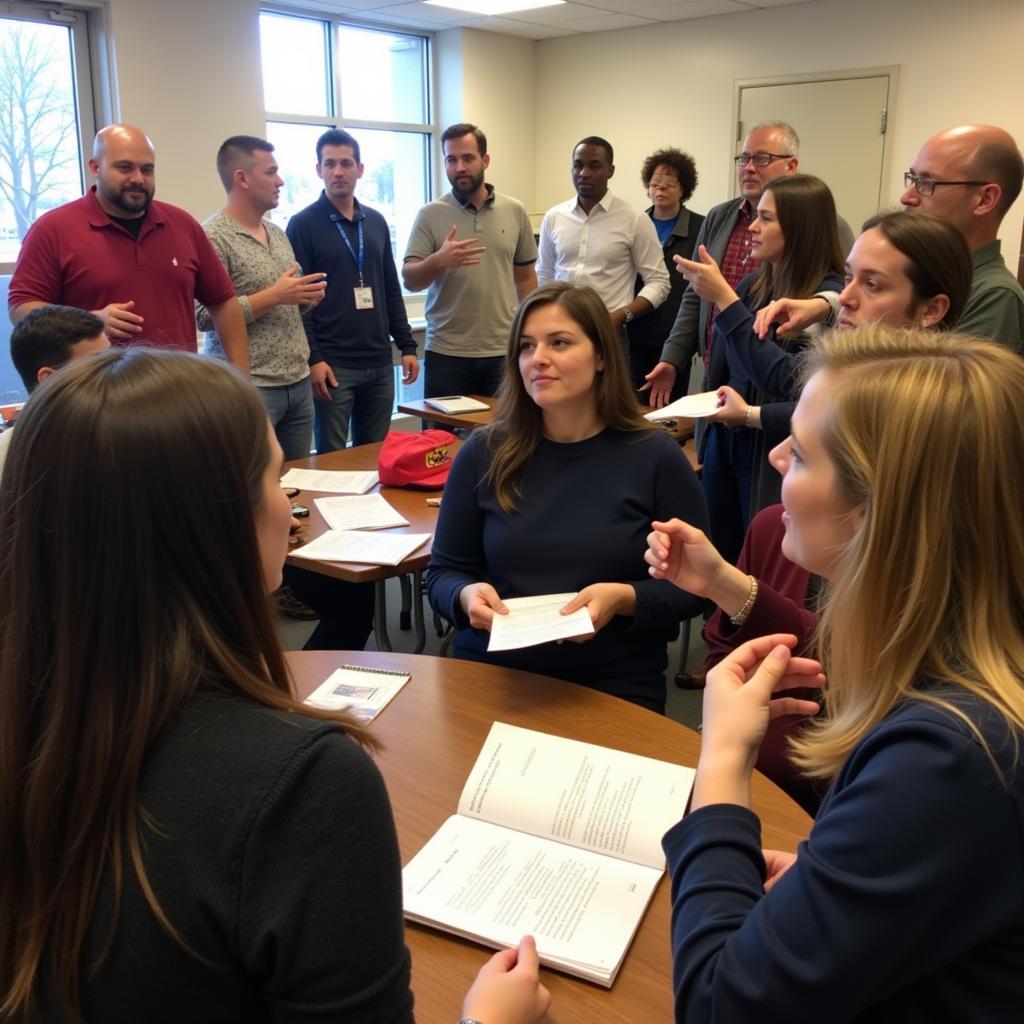Community-based participatory research methods, often shortened to CBPR, represent a collaborative approach to research that equitably involves all partners in the research process. This method recognizes the unique strengths that each stakeholder brings to the table, valuing community knowledge and lived experiences in tandem with academic expertise.
 Community Members and Researchers Collaborating
Community Members and Researchers Collaborating
Unveiling the Power of CBPR
Traditional research models often operate from a top-down approach, with academic institutions leading the charge and communities serving primarily as data points. In contrast, CBPR emphasizes community engagement and empowerment throughout every stage of the research journey, from defining research questions and methodology to data analysis, dissemination of findings, and advocacy for change.
Key Principles of CBPR
Several core principles underpin the philosophy of community-based participatory research methods:
- Collaboration: A genuine partnership between researchers and community members ensures shared ownership and responsibility for the research project.
- Co-learning: Both academic researchers and community stakeholders acknowledge and value each other’s knowledge and expertise, fostering a dynamic learning environment.
- Empowerment: CBPR aims to empower communities by providing them with the tools and knowledge to address issues affecting their lives actively.
- Social Action: This research approach goes beyond simply generating knowledge; it aims to translate findings into tangible social change that benefits the community.
Why Choose Community-Based Participatory Research Methods?
 Community Meeting Discussing Research
Community Meeting Discussing Research
The strength of CBPR lies in its ability to bridge the gap between research and real-world impact. By fostering trust and mutual respect between academic institutions and the communities they study, CBPR leads to:
- More Relevant Research: When communities are active participants in shaping research questions, the resulting studies are more likely to address issues of genuine concern to those communities.
- Increased Data Validity: CBPR recognizes the value of local knowledge and lived experience, leading to richer, more nuanced data collection and analysis.
- Enhanced Research Impact: Because CBPR findings are often co-owned by the community, they are more likely to be trusted and acted upon, leading to more sustainable and culturally appropriate interventions.
- Greater Community Ownership: By investing communities in the research process, CBPR cultivates a sense of ownership over the findings, empowering them to advocate for change based on evidence.
Examples of CBPR in Action
The applications of community-based participatory research methods are diverse and adaptable to a wide range of disciplines and social issues:
- Public Health: A community experiencing high rates of diabetes might partner with researchers to investigate the social determinants of health contributing to this disparity and develop culturally tailored interventions to promote healthy lifestyles.
- Environmental Justice: Residents living near industrial sites could collaborate with researchers to monitor environmental pollution levels, document health impacts, and advocate for policy changes to protect their community.
- Education: A school district grappling with low graduation rates among minority students might engage in CBPR to understand the systemic barriers these students face and co-create solutions to improve educational outcomes.
what is participatory research effectively illustrates the potential of this collaborative approach to address various social concerns.
Navigating Challenges in CBPR
While incredibly valuable, community-based participatory research methods are not without their challenges:
- Building Trust: Establishing genuine partnerships between academic institutions and communities, especially those that have historically been marginalized or exploited by research, takes time and effort.
- Balancing Power Dynamics: It’s crucial to address power imbalances between academic researchers and community members, ensuring that all voices are heard and valued equally.
- Sustaining Engagement: Maintaining long-term community engagement throughout the research process requires ongoing communication, flexibility, and a commitment to addressing evolving needs.
Conclusion
Community-based participatory research methods offer a powerful framework for conducting research that is not only rigorous but also relevant, respectful, and responsive to the needs of communities. By embracing collaboration, co-learning, and a commitment to social action, CBPR has the potential to transform research from an extractive process into a catalyst for positive social change.
what is community engaged research can offer additional insights into the transformative potential of collaborative research approaches.